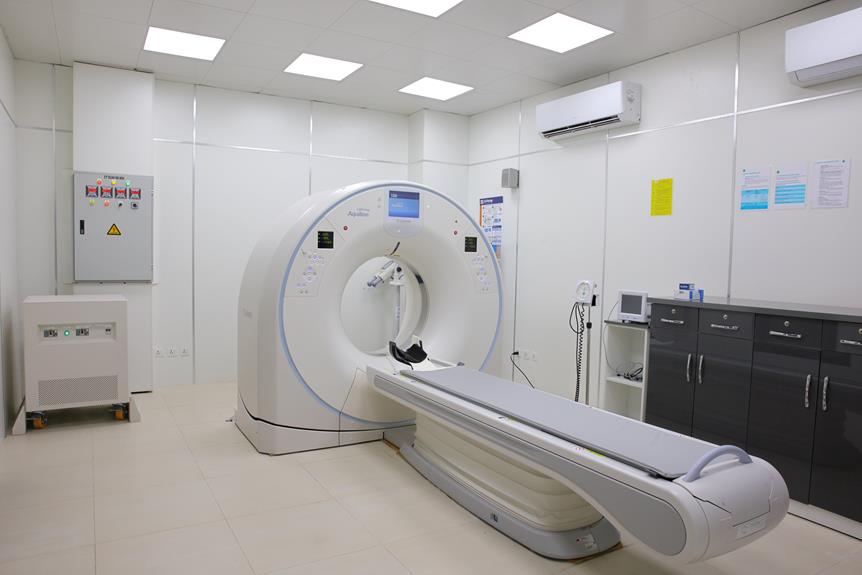As the jewelry industry evolves, the concept of lab-grown diamonds presents a compelling shift towards sustainability and ethical sourcing practices. With advancements in technology and a focus on environmental consciousness, lab-grown diamonds offer a fascinating alternative to traditional mined diamonds.
The intricate process of creating these gems in controlled environments not only ensures high quality but also raises intriguing questions about the future of luxury jewelry.
Stay tuned as we delve deeper into the world of lab-grown diamonds and uncover the brilliance that lies within this innovative approach to diamond creation.
Key Takeaways
- Lab-grown diamonds offer sustainable luxury with ethical practices.
- Advanced technology ensures high quality and customizable options.
- Labrilliante leads the eco-conscious shift in diamond manufacturing.
- Growing demand reflects consumer preference for ethical and brilliant lab-grown diamonds.
Sustainable Approach to Lab-Grown Diamonds
Labrilliante's groundbreaking sustainable approach to lab-grown diamonds sets a new standard in the jewelry industry by emphasizing ethical sourcing and environmentally conscious manufacturing practices. The collection's symbolic beauty showcases the transformative practices driving a shift from traditional mining to sustainable methods.
Labrilliante's green lab diamonds not only radiate elegance but also represent a commitment to reducing the environmental impact of diamond production. By focusing on sustainability and ethical practices, Labrilliante leads the way in the transformative era of diamond manufacturing. This approach ensures that each lab-grown diamond not only meets the highest quality standards but also aligns with the growing consumer preference for eco-conscious and ethically sourced luxury items.
Production Process and Advantages
With a meticulous focus on quality and environmental impact, the production process of lab-grown diamonds exemplifies precision and sustainability in the jewelry industry. Lab-grown diamonds start with diamond seeding in a controlled environment, replicating the natural growth process to ensure quality and minimize environmental impact. These diamonds offer cost-effective alternatives to mined diamonds while guaranteeing higher quality, purity, and unparalleled customization options. The table below highlights the advantages of lab-grown diamonds:
| Advantages | |
|---|---|
| Cost-effective alternatives | Lab-grown diamonds provide a more affordable option compared to mined diamonds. |
| Customization options | Offers unmatched possibilities for customization, meeting diverse consumer preferences. |
Ethical Commitment in Jewelry Industry
Demonstrating unwavering commitment to ethical practices, the jewelry industry places paramount importance on sustainability and responsible sourcing of materials. Ethical jewelry companies like Labrilliante ensure conflict-free diamond sourcing, minimizing the environmental footprint in production processes.
By focusing on sustainability and ethical practices, these companies contribute to an ethical supply chain and support for fair labor practices. Lab-grown diamonds play a significant role in reducing the environmental impact, with a decreased carbon footprint compared to mined diamonds.
This alignment with corporate social responsibility initiatives highlights the industry's dedication to ethical sourcing and reducing its environmental impact. Through these efforts, there's a potential to transform the traditional jewelry supply chain towards a more sustainable and eco-conscious future.
Growth and Impact of Industry
The exponential growth of the lab-grown diamond industry reflects a significant shift in consumer preferences towards sustainable and ethical jewelry options, driven by technological advancements and a heightened awareness of environmental impact. This growth and impact can be outlined as follows:
- Projected to reach $27.6 billion by 2023.
- Rising demand for sustainable jewelry options.
- Technological advancements driving production efficiency.
- Global expansion of lab-grown diamond manufacturers.
The industry's expansion signifies a changing landscape in the jewelry market, with consumers increasingly valuing ethical and eco-friendly practices. As the industry grows globally, it meets the rising demand for sustainable alternatives to traditional mined diamonds, catering to a new generation of conscious consumers.
Innovation in Diamond Creation
Innovative techniques in diamond creation, utilizing advanced technology such as Chemical Vapor Deposition (CVD), have revolutionized the jewelry industry's approach to sourcing high-quality gems. Controlled growth methods allow for the replication of natural processes in a precisely managed environment, ensuring the quality and purity of lab-grown diamonds.
Advanced technologies like CVD enable manufacturers to have meticulous control over diamond characteristics, resulting in gems that are on par with natural diamonds in brilliance and quality. Continuous research and development in lab-grown diamond production further enhance the industry's capabilities, offering unparalleled customization options and opening up new design possibilities.
This commitment to innovation not only guarantees environmentally conscious practices but also eliminates concerns related to unethical mining, providing a sustainable and ethical alternative in the jewelry market.
Transparency in Diamond Supply Chain
Building upon the advancements in diamond creation techniques, the jewelry industry is increasingly emphasizing the necessity of transparency within the diamond supply chain to ensure ethical sourcing practices and consumer trust. It is essential for consumers to know the journey of their diamonds, from extraction to the finished product, to make informed and ethical purchasing decisions.
Key aspects of achieving transparency in the diamond supply chain include:
- Traceability: Tracking the origin of diamonds to ensure ethical practices.
- Certifications: Providing documentation to verify the authenticity and ethical standards of diamonds.
- Collaboration: Working with stakeholders across the supply chain to promote transparency.
- Consumer Education: Educating buyers on the importance of ethical sourcing and supply chain transparency.
Consumer Awareness and Responsible Consumption
Enhancing consumer awareness and promoting responsible consumption practices in the jewelry market is crucial for fostering ethical and sustainable choices. Consumer education plays a vital role in informing buyers about the impact of their purchases on the environment and society.
By emphasizing ethical sourcing practices, such as opting for lab-grown diamonds that are conflict-free and sustainable, consumers can contribute to positive change within the industry. Encouraging responsible consumption habits involves transparency in the supply chain, supporting fair labor practices, and advocating for environmentally conscious production methods.
As more consumers become aware of the social impact of diamond mining, there is a growing trend towards choosing eco-friendly and ethically sourced jewelry. This shift reflects a collective effort towards creating a more sustainable and ethical jewelry market.
Frequently Asked Questions
How Do Lab-Grown Diamonds Compare in Terms of Durability and Longevity to Natural Diamonds?
Lab-grown diamonds exhibit comparable durability and longevity to natural diamonds due to identical chemical composition and crystal structure. They undergo rigorous testing to ensure quality standards, offering a sustainable, cost-effective, and ethical alternative in the luxury jewelry market.
Are There Any Limitations to the Customization Options Available With Lab-Grown Diamonds?
While lab-grown diamonds offer extensive customization options and design flexibility, some limitations may exist due to current technological constraints. Advancements in production methods continually enhance customization possibilities, ensuring a wide range of design choices for consumers.
What Measures Are Taken to Ensure the Authenticity of Lab-Grown Diamonds in the Market?
Ensuring the authenticity of lab-grown diamonds in the market involves a meticulous verification process. Compliance with market regulations, including certification by reputable gemological laboratories, guarantees the origin and quality of these sustainable gems, providing consumers with confidence and trust in their purchase.
Can Lab-Grown Diamonds Be Distinguished From Natural Diamonds by the Naked Eye?
Lab-grown diamonds can be distinguished from natural diamonds through visual inspection and spectroscopy. However, consumer perception and market demand for sustainable, ethical jewelry drive the need for transparency in diamond identification to meet these preferences.
How Does the Pricing of Lab-Grown Diamonds Compare to Natural Diamonds, and What Factors Contribute to the Cost Difference, if Any?
Lab-grown diamonds offer a cost-effective alternative to natural diamonds due to streamlined manufacturing processes. Market demand for sustainable and ethically sourced gems also influences pricing. Factors include production efficiency, ethical practices, and consumer preferences.
Conclusion
In the ever-evolving realm of luxury jewelry, lab-grown diamonds shine as beacons of sustainability and ethical practices.
Like rare gems forged in the depths of the earth, these green lab diamonds symbolize a new era of conscious consumption and responsible sourcing.
As the industry continues to grow and innovate, the brilliance within lab-grown diamonds serves as a testament to the transformative power of ethical choices in shaping a more sustainable future for all.

